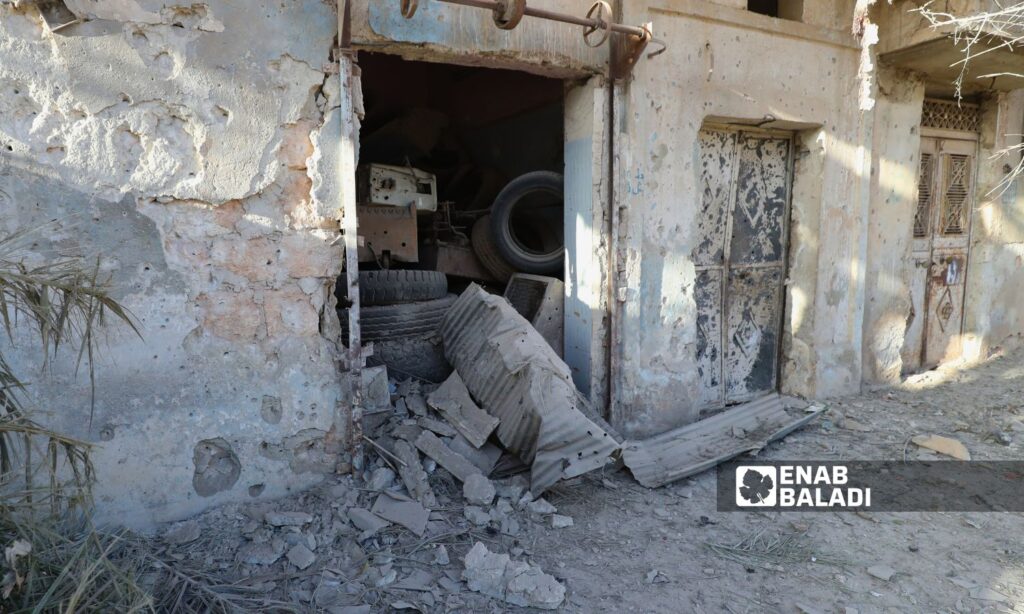The regime and Russia have escalated attacks on areas in northwest Syria this July, coinciding with increasing talk of rapprochement between the Assad regime and Turkey with Russian mediation and efforts.
The regime and Russia used artillery and missiles in the bombardment, in addition to airstrikes, and intensified the use of suicide drones.
The Syria Civil Defence (The White Helmets) warned on July 11th about “new and dangerous tactics using Russian warplanes with highly explosive munitions, and the regime’s use of suicide drones targeting civilians and populated areas.”
The Civil Defence stated that the escalation increases instability and undermines civilian life and activities, particularly educational and agricultural, in many areas of northwest Syria, warning of a catastrophe and a new wave of displacement.
Three reasons for escalation
Nawar Shaaban, a researcher at the Omran Center for Strategic Studies, told Enab Baladi that the bombardment has returned strongly to northwest Syria compared to the previous period, especially with the use of suicide drones targeting civilian areas. However, the current bombardment does not compare to the bombardment during military operations, as was the case in 2019.
According to Shaaban, the escalation is due to three main reasons:
First, the disruptive bombardment has Iran playing a major role in it, as it tries to create permanent gaps, especially with a “clear intention to pave the way for the beginning of (Turkish-Syrian) negotiations.”
Therefore, Iran and its militias, and the parties that do not benefit from the rapprochement between several countries and the regime, mainly work to engage the front lines, and this has been evident in the use of suicide drones.
The second reason is a well-known Russian tactic, where, with every political entitlement involving Russia, it tries to escalate the bombardment to pressure militarily before any negotiation session.
The third reason is security and military vulnerabilities due to the long front lines, and the regime may launch a military operation at any stage, according to Shaaban.
Intensified reconnaissance before the escalation
The military escalation in Idlib was preceded by intensive reconnaissance flights.
“Observatory 80” (Abu Amin), specializing in monitoring military movements in the region, told Enab Baladi earlier that the Idlib region witnessed significant active reconnaissance flights, whether Turkish or belonging to Russia and the Syrian regime.
The observatory explained that the drones flew over the al-Ghab Plain area in the northern Hama countryside, Jabal al-Zawiya, and the eastern region of Jabal al-Zawiya, southern Idlib, reaching Maarat al-Nassan in its eastern countryside, where Russia works to update its data and target bank.
The attacks on northwest Syria varied between artillery shelling from regime forces targeting villages and towns in the Idlib and Aleppo countryside, and other shelling from areas controlled by the regime forces and the Syrian Democratic Forces (SDF), targeting the Aleppo countryside.
Airstrikes also targeted a high school on July 10th, and the strikes caused the destruction of a residential building and a swimming pool housing displaced families, and three uninhabited tents in the village of al-Hamama in the Jisr al-Shughour countryside, western Idlib.
As for suicide drones, the region faces attacks on an almost daily basis, according to Civil Defence data.
They target civilian cars, homes, and agricultural machinery, causing significant material damages, particularly preventing civilians from harvesting their crops for fear of being targeted by these drones.
The number of drones used in bombing civilians varies from day to day, the most violent being on July 21st with 21 drones, on July 15th with 11 drones, and on July 9th with 9 drones.
The region is subject to an agreement signed in Moscow on March 5, 2020, between Turkish President Recep Tayyip Erdoğan and Russian President Vladimir Putin, which stipulated a ceasefire as one of its main clauses.
The agreement maintained the distribution of military control but did not stop the regime and Russia’s bombing, which claimed civilian victims.
The Syria Civil Defence documented that during the first half of the current year 2024, northwest Syria was subjected to 392 attacks by regime and Russian forces and their loyal forces, causing the death of 38 civilians, including 13 children and 6 women, and injuring 150 civilians, including 57 children and 16 women.

